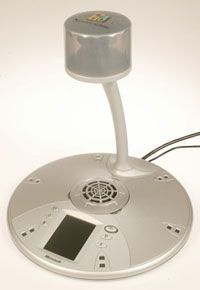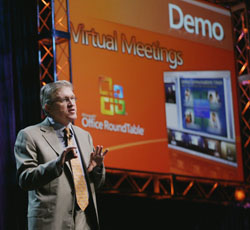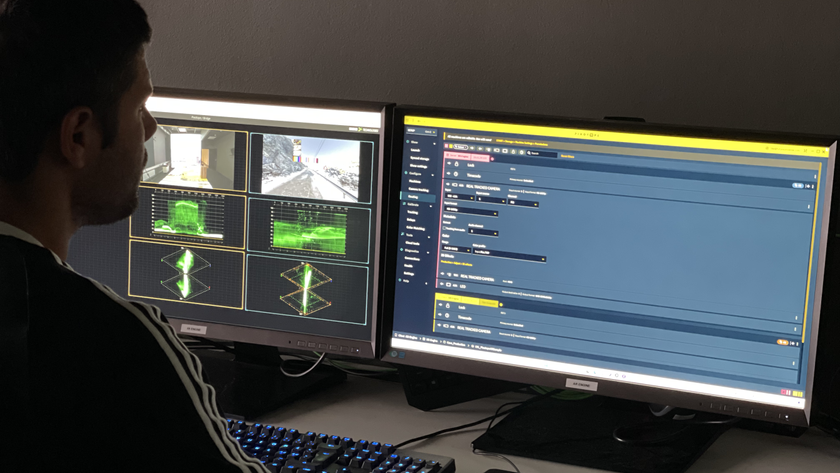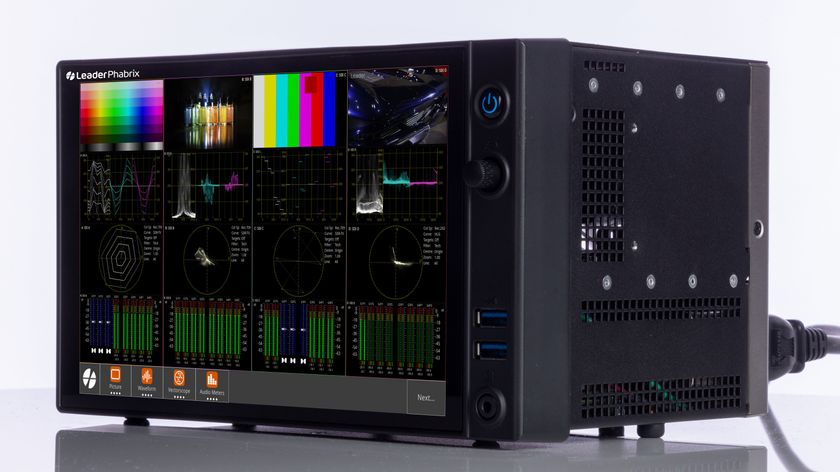- Microsoft has announced, via a splashy San Francisco rollout event on June 25, its broad initiative to bring enterprise-grade telephony and enhanced collaborative communications tools to businesses. Building upon its strength in the desktop and server software sectors, Microsoft introduced a number of new or expanded offerings in the realm of IP telephony, instant messaging (IM), e-mail, videoconferencing, and collaborative meeting tools.
- Microsoft needed something big to combat recent competitive stress from companies like Google and even Apple. What's bigger than announcing that you want to own the office telephone environment? Not much. Microsoft has a shot at making a real difference in modern communications and the allied enhanced productivity it can bring to the business world, albeit mainly as an evolution to its core software applications along with some new hardware, rather than in a revolutionary technology shift.
Microsoft's core experience is in applications; the software that makes hardware do specific things for you, and the revealed road map included a number of new and updated applications to help tear down what Jeff Raikes, Microsoft Business Division president, calls "Silos" of e-mail, instant messaging, mobile and voice over Internet protocol (VoIP) telephony, and audio-, video-, and webconferencing.
Microsoft has clout to spare in desktop applications, server software, e-mail software, internet browsers, and even IM and digital media. To build upon these strengths it is releasing several new core platforms and evolving others. The Office Communications Server 2007 is the heart of its telephony "road map" to business communications. This server is intended to replace legacy digital telephone systems with IP phones, something that companies like Cisco, 3-Com, and other players--both incumbent telephone equipment manufacturers and newcomers alike--have been doing for years.
The announced technology protocol for the IP phones is SIP (session initiated protocol), which is designed to be an open-architecture specification allowing interoperability across a wide array of telephone equipment manufacturers (PolyCom seems to be on board as an instrument supplier along with myriad others including Motorola, Samsung Electronics, Plantronics, Tatung, and Logitech). And while SIP plays nicely into the belief that Microsoft software should ride on a lot of different hardware offerings, it is often lacking in the robust--and many times proprietary--feature sets that full-blown business telephone systems offer. In short, SIP is intended, at least at this time, to be the new plain-old-telephone-service or POTS type of functionality offered by single line telephone sets of old (think home phone here).

The Microsoft Office RoundTable is an audio-video collaboration device with a 360-degree camera. When combined with Office Communications Server 2007, RoundTable delivers an immersive conferencing experience
Microsoft's core experience is in applications; the software that makes hardware do specific things for you, and the revealed road map included a number of new and updated applications to help tear down what Jeff Raikes, Microsoft Business Division president, calls "silos" of e-mail, instant messaging, mobile and voice over internet protocol (VoIP) telephony, and audio-, video-, and webconferencing. "Unified communications will drive the next major advancement in individual, team, and organizational productivity in today's 24/7, always connected and increasingly mobile work environment," Raikes said.
In addition to the SIP server, new releases were announced for Office Communicator 2007, a unified communications client that works in tandem with Office Communications Server 2007 to deliver a presence-based, enterprise VoIP "softphone;" secure, enterprise-grade instant messaging that allows for inter-company federation and connectivity to public instant messaging networks such as MSN, AOL, and Yahoo!; one-to-one and multiparty video- and audioconferencing, and webconferencing.
As an end-point adjunct to the communications process, Microsoft is offering the Office Communicator Phone Experience, a nice spin on making calls. This application is intended to drive an innovative set of new voice and video devices--including business-enabled IP desktop phones--from Polycom, LG-Nortel, and Thomson Telecom. In referring to this as a "new ecosystem" of phone functionality, Microsoft has, in essence, declared its approach as the platform to build the future of telecom upon. The current players, old and new, are no doubt scrambling to either beat Microsoft or join it, while most likely praying for another foray failure, like Microsoft suffered with original Windows-based telephony servers. The existing IP telephony world has had trouble gaining traction with applications developed by telephone equipment makers, and Microsoft has the opportunity to drive customer awareness and need to the application segment, just by showing up with its versions of IP telephony, videoconferencing, and network-based collaboration tools.
Microsoft's current vision is typically far-reaching and pressures not just the telecom space, but also the audiovisual world. What is really on the table here is an attempt at truly defining what a total communications experience is, or should be, using convergence as the driver. In breaking down silos of IT-centric systems like e-mail, IM, webconferencing, and coupling it with IP telephony, voice mail, speech recognition using new applications like Office Live Meeting and a cool-looking, 360-degree videoconferencing camera called Office RoundTable, the AV world will be driven even further into the blending (some say, collision) of AV and IT.
This affects not only what products and services are available, but also the channel by which they are brought to market. Microsoft did not reveal how it intends to crack the Telecom marketing/sales nut, but there are existing dealers, VARs, system integrators, and potential newcomers that will most likely have to scramble to compete with a new behemoth on the playing field, or change their strategy and product alignments.
Certainly, Microsoft will need the partners it has curried in order to penetrate the telecom sector, as well as support from both the existing AV and IT sectors. It will also create what Charles Giancarlo, senior vice president of Cisco, called "a lot of gnashing of teeth and shaking of spears"--a fitting comment from a company that has had a truce of sorts with Microsoft in the separation of the router and switching space from the desktop and server software arena. Microsoft's announcements ram straight into Cisco's vision of similar tools, which they recently announced.
It was stated during the event that much of what was talked about was real today. Demoed were the 360-degree camera and Live Meeting, which offers a filmstrip view of all conferees at the bottom of the screen while automatically repositioning the camera view on the active talking in a separate video window. But the scheduled release of much of this product is not until the end of 2006 or next year, and the announcement was cleverly positioned to future-pace the industry, while simultaneously taking its pulse. Time will tell how Microsoft's initiative plays out, and the skeptics from many camps will be looking for chinks in the approach. It's revealing to note that the PowerPoint slides shown over the Live Meeting web-link of the rollout event were grainy at best, while the video and audio were quite acceptable by current internet standards.
Nonetheless, Microsoft has committed $2 billion to its efforts as a statement of wherewithal if not outright hubris. As system integrators, especially those that provide conferencing and telephone systems, this is an announcement to watch closely. It could be the beginning of the end of the disparate systems we bring together to solve our customers' communications needs.











